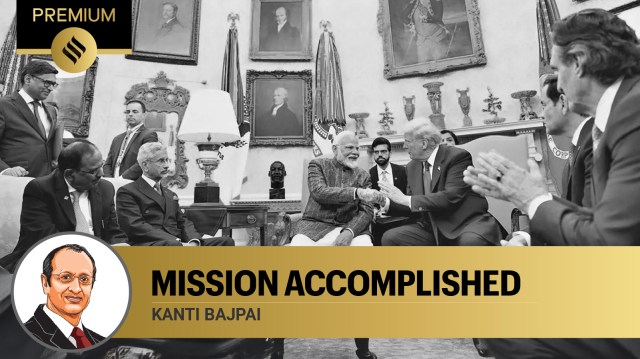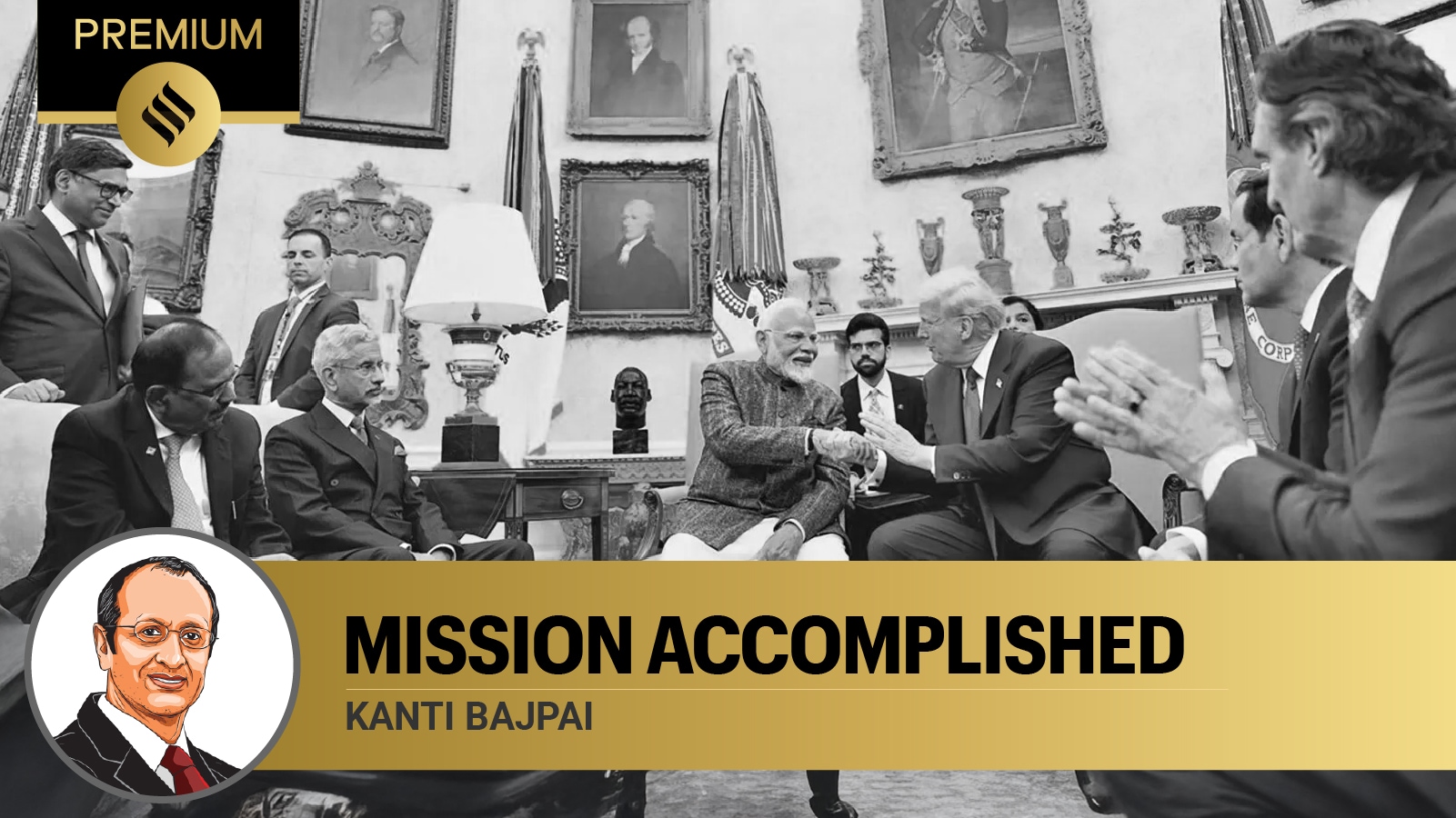

Feb 15, 2025 13:49 IST First published on: Feb 15, 2025 at 07:07 IST
The meeting between Narendra Modi and Donald Trump went about as well as it could. While the shadow of friction points was evident, it did not mar the visit. This is not terribly surprising because high-level meetings are carefully choreographed in terms of final outcomes, and discordant notes are suppressed or finessed. With Trump, there is, of course, always the risk of the unexpected, but the Indian side can come away with a sense that it was largely mission accomplished.
What are the key takeaways for India? Joint statements are indicative of the priorities and the biggest takeaways (unless there are secret agreements). It is always useful to look at what is upfront in a joint statement for clues. The statement features six areas: Defence, trade and investment, energy, technology and innovation, multilateral cooperation, and people-to-people (P2P), in that order. It is safe to say that the first three areas are key.
Story continues below this ad
The Foreign Secretary’s “special briefing” to the media more or less followed the same order in terms of the areas of agreement, though it was perhaps significant that in his remarks, multilateral cooperation came last — significant because Trump’s America is focused on transactional bilateral relationships and suspicious of or indifferent to regional and international partnerships. As a result, almost everything in the multilateral cooperation section was blameless and boilerplate.
The big friction points going into the meeting were trade and immigration: India’s large trade surplus on the back of high tariffs, and the status of illegal Indian migration to the US. Delhi can be reasonably satisfied with how both these were treated in the joint statement. In essence, the US avoided slamming India on tariffs publicly. The road ahead seems to be to find a way to reduce the surplus through a multisectoral trade agreement to be concluded by the fall of 2025.
As for illegal migration, the two sides agreed that they would “aggressively” combat illegal migration and the networks that facilitate it — the world “aggressively” undoubtedly reflecting US insistence and the focus on networks being an Indian preference. At the same time, Delhi has come away with an assurance that the US wants to continue with student visas, visas for professionals, and legal migration. If India pressed the point about the mistreatment of recently repatriated illegal migrants, it was in private and it got no recognition in statements during the visit.
Story continues below this ad
A third potential friction point was the Gurpatwant Singh Pannun assassination case. Just hours before the Modi-Trump meeting, a senior White House official stated that Trump “prioritises nothing more than the safety of every American”. This was in response to a question on whether Trump would raise the Pannun issue with Modi. In his media briefing, the Foreign Secretary referred to the joint statement’s indication that both sides would deal with “elements who threaten public and diplomatic safety and security, and the sovereignty and territorial integrity of both nations”. This takes into account the US concerns over the Pannun case and India’s concerns over anti-India protests and separatist activities in America.
Beyond the management of friction points, the visit was notable for three agreements.
The first was a new 10-year defence partnership agreement to be signed later this year. As part of this, India will get the Javelin anti-tank missile, Stryker combat vehicles, and more P-81 maritime patrol aircraft. Plus, the US will co-produce AI-enabled unmanned systems for underwater domain awareness. Not mentioned in the official statements, but featured in Trump’s remarks, is also the promise to consider selling India the F-35 combat aircraft.
Secondly, partly to deal with the Indian trade surplus, the two sides have committed to increasing Indian oil and gas imports from the US. The Foreign Secretary suggested the increase would be from about $15 to $25 billion “in the near future”. Beyond this, India will continue to improve the civil liability framework to enable US help in building both large and small modular reactors.
Finally, nested in the section on technology and innovation, beyond all the usual words on developing semiconductors, AI, biotech, and space cooperation, is an agreement to launch a Strategic Mineral Recovery initiative to recover key minerals from heavy industries such as aluminium, coal mining, oil and gas. Critical minerals are vital economic and military resources, and China is very well endowed.
most read
Modi’s visit was both symbolically and substantively productive. The Prime Minister got a warm embrace from the US President and met key figures friendly to India such as Elon Musk, Tulsi Gabbard, and Vivek Ramaswamy. Trump refrained from embarrassing India over tariffs, though higher tariffs on Indian products will likely soon kick in. The areas of cooperation ahead are solid ones to deepen – defence, trade and investment, energy, and technology.
The Prime Minister and his team should be smiling on their way home.
The writer is Wilmar Professor of Asian Studies and vice dean, Research and Development, Lee Kuan Yew School of Public Policy, National University of Singapore


